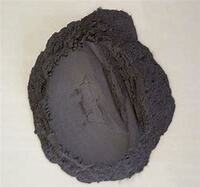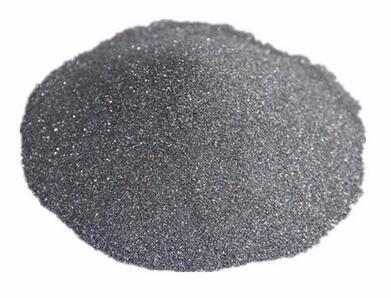Overview of long venturi nozzle boron carbide or tungsten carbide
Boron Carbide (B4C) is a ceramic compound renowned for its exceptional hardness and wear resistance, ranking just below diamond and cubic boron nitride in terms of hardness. Composed of boron and carbon atoms arranged in a covalently bonded crystal structure, it exhibits unique physical and chemical properties that make it highly valuable in various industrial and military applications. Boron carbide’s high melting point, low density, neutron-absorbing capability, and extreme toughness further distinguish it among advanced materials.
Features of long venturi nozzle boron carbide or tungsten carbide
-
Extreme Hardness: With a Mohs hardness of around 9.3 to 9.5, boron carbide is one of the hardest materials known, surpassed only by diamond and cubic boron nitride.
-
Lightweight: Despite its hardness, boron carbide has a relatively low density of about 2.52 g/cm³, which makes it an attractive material for lightweight armor systems.
-
Thermal Stability: It possesses excellent thermal stability, maintaining its properties up to temperatures around 2,000°C, making it suitable for high-temperature applications.
-
Neutron Absorption: Boron carbide is a potent neutron absorber due to its boron content, making it ideal for nuclear shielding and control rods.
-
Chemical Resistance: Resistant to most acids and alkalis, except for hydrofluoric acid and hot concentrated alkaline solutions, ensuring durability in corrosive environments.
-
Abrasion Resistance: Its exceptional wear resistance makes it suitable for applications where friction and abrasion are prevalent, such as sandblasting nozzles.

(long venturi nozzle boron carbide or tungsten carbide)
Parameters of long venturi nozzle boron carbide or tungsten carbide
The choice of a long venturi nozzle with boron carbide or tungsten carbide depends on several factors such as the desired nozzle profile, intended application, and materials being used in the application.
In general, boron carbide profiles are more appropriate for high-pressure applications where the flow rate is high and needs to be controlled quickly. Boron carbide can achieve a high pressure output while maintaining low pressure levels, which makes it ideal for gas and liquid applications.
Tungsten carbide profiles, on the other hand, offer a higher flow rate than boron carbide but also lower pressure levels. Tungsten carbide is commonly used in gas applications due to its strong chemical bonds that make it resistant to oxygen and gas and can maintain high pressures for longer periods of time.
When choosing a long venturi nozzle, it’s important to consider the necessary pressure range for the application you’reing. A nozzle with a high pressure range will be able to control the flow rate quickly and efficiently without entering overpressure. Additionally, the material chosen will affect the overall performance of the system. Boron carbide is a good choice for gas applications due to its durability and resistance to harsh chemicals. However, it may not be suitable for liquid applications because of its low pressure level.
When selecting a long venturi nozzle, it’s essential to consider the specific requirements of your application. For example, the length of the, the type of material used, and the intended temperature range. You may need to adjust the nozzle size and length accordingly to achieve the desired nozzle profile.
Overall, the long venturi nozzle with boron carbide or tungsten carbide is a versatile and efficient tool that meets the needs of various applications. The choice of profile, material, and application must be made based on the specific requirements of the job at hand.

(long venturi nozzle boron carbide or tungsten carbide)
Applications of long venturi nozzle boron carbide or tungsten carbide
-
Armor Systems: Widely used in body armor, vehicle armor, and bulletproof vests due to its lightweight and superior protection capabilities.
-
Nuclear Applications: As control rods and shielding material in nuclear reactors because of its neutron absorbing properties.
-
Abrasive and Cutting Tools: In grinding wheels, polishing powders, and cutting tools due to its hardness and wear resistance.
-
Industrial Nozzles: For sandblasting and water jet cutting applications where resistance to wear and erosion is critical.
-
Military and Defense: As a component in armor-piercing projectiles and defensive systems.
Company Profile
MyCarbides is a trusted global chemical material supplier & manufacturer with over 12-year-experience in providing super high-quality carbides and relative products.
The company has a professional technical department and Quality Supervision Department, a well-equipped laboratory, and equipped with advanced testing equipment and after-sales customer service center.
If you are looking for high-quality carbide materials and relative products, please feel free to contact us or click on the needed products to send an inquiry.
Payment Methods
L/C, T/T, Western Union, Paypal, Credit Card etc.
Shipment
It could be shipped by sea, by air, or by reveal ASAP as soon as repayment receipt.
FAQs of long venturi nozzle boron carbide or tungsten carbide
Q: Is long venturi nozzle boron carbide or tungsten carbide toxic?
A: Pure boron carbide is generally considered safe to handle. However, during machining or grinding, dust inhalation can be a concern, requiring proper ventilation and protective equipment.
Q: Can long venturi nozzle boron carbide or tungsten carbide be machined?
A: Due to its extreme hardness, machining boron carbide is difficult and requires specialized techniques and diamond tooling. Grinding, EDM (Electrical Discharge Machining), or laser cutting are common methods.
Q: How does long venturi nozzle boron carbide or tungsten carbide compare to tungsten carbide in terms of hardness?
A: long venturi nozzle boron carbide or tungsten carbide is harder than tungsten carbide, with a Mohs hardness of around 9.3 to 9.5 compared to tungsten carbide’s 8.5 to 9.
Q: What is the primary use of long venturi nozzle boron carbide or tungsten carbide in the military sector?
A: long venturi nozzle boron carbide or tungsten carbide is primarily used in the military for body armor, armored vehicles, and as a component in armor-piercing ammunition due to its combination of hardness, light weight, and ballistic performance.
Q: Can long venturi nozzle boron carbide or tungsten carbide be used in high-temperature applications?
A: Yes, long venturi nozzle boron carbide or tungsten carbide maintains its structural integrity and properties up to very high temperatures, making it suitable for use in extreme heat environments such as furnace linings and high-temperature ceramics.

(long venturi nozzle boron carbide or tungsten carbide)





